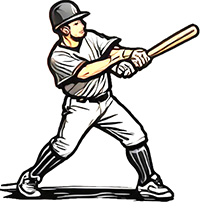In the modern world, the emergence of peptides has caused quite a stir. Some of these substances are used to lose weight and build muscle, while others improve overall endurance and resistance to environmental influences. Questions about peptides in sports have been raised since the early 2000s when these substances were actively used to improve team and individual performance in preparation for championships. Their use has increased over time, particularly in developed countries.
 there are many supplements available for athletes
there are many supplements available for athletes Simple About Difficult
Unfortunately, few people understand what peptides are and why we need them. In general, parts of protein cells, available in powders, capsules, and ampoules, are considered dietary supplements because they are formed by a certain number of amino acids combined with water to form chains. Peptides are small proteins due to their chemical composition. Peptides are compounds composed of up to fifty amino acids, though this definition is not entirely accurate.
Peptides in Sports
An athlete experiences far more in a week than the average person does in a year. As a result, reserve strength is used for recovery, and the energy estimated for a lifetime of use is consumed. An athletic career is a constant source of stress:
- Trainings;
- Both good and bad performances;
- Injuries;
- Acclimatization;
- Air travel that involves changing time zones;
- A sizable number of events.
There are companies that offer entire suites of products designed specifically for athletes. One such company is PowerPeptides. It is more than just a reputable US supplier of research peptides. The company is a catalyst for scientific advancement, committed to providing high-quality peptides that enable its customers to push athletic limits.
How Peptides Work
At a young age, the reproduction of all of the elements required for tissue vitality is well established. However, as the body matures and is subjected to varying degrees of environmental stress, amino acids for the repair of damaged cells become insufficient. For example, substances that influence growth naturally decrease with physical activity and age. Thus, active sports cause overconsumption of the natural level of peptides, which leads to disorders in the functioning of human tissues and, ultimately, cancer. Adapting to training systems, some organs in athletes develop differently than in normal people:
Heart
It transforms into an "athletic" form in order to withstand constant strain. It differs from the normal one in that when it contracts, it expels 150 ml of blood, which is three times the usual amount. It can also contract 180 times per minute, which is 50 times faster than the average person. This heart is more advanced, but its lifespan is significantly shorter. Furthermore, when a regular training regimen is discontinued, the heart and blood vessels begin to age rapidly, resulting in strokes and heart attacks. Unfortunately, two-thirds of all athletes experience serious heart problems before the age of 17.
Brain
This organ's blood circulation has dramatically increased. This positively affects the body's overall development. Unfortunately, this development is not uniform. The majority of the improvements focus solely on the centers that control movement, coordination, and reaction. At the same time, intelligence, memory, and associative thinking develop in a retarded manner. The worst-case scenario after an athlete's career ends is that the sudden decrease in the load on the brain lobes causes depression, nervousness, and intemperance, which can lead to alcoholism.
Joints
These human body parts, like all others, are susceptible to wear and tear. This is why, despite the excellent treatment options available in modern medicine, joint problems are common among athletes nearing the end of their sporting careers. Osteoporosis and osteoporosis occur in old age as a result of cartilage wear and tear and calcium leaching from the body in the course of training.
Performance Improvement
To avoid body wear and tear, athletes replenish their natural peptides and amino acid stores. Fortunately, it is no longer a problem. After all, almost every manufacturer now includes peptides in their sports nutrition products. With an adequate supply of amino acids, the body recovers quickly from stress and overload, resists infections and acute respiratory infections, and fights aging and cancer. Thus, the proper use of safe sports peptides, which have been clinically tested and recommended by experts, is not only beneficial but also necessary.
Additionally, peptides are more stable compounds than hydrogen-bonded amino acids. As a result, they can be used to target individual organs. For example, glutamine and creatine peptides (the most commonly used sports peptides) are rapidly absorbed and have no adverse effects. They are utilized to regenerate organs and tissues. And in sufficient quantities, they perfectly activate the rejuvenation processes.
Conclusion
As a result, we discovered that peptides are essential for sports recovery. And their consumption not only replenishes the organism's resources but also protects it from premature wear. Because of their high absorption rate, we recommend them to both amateur and professional athletes looking to maintain a high level of vital resources for many years.
Related Pages
- Protein and Sports Performance
- Guide to Athletic Supplements
- Amino Acid Supplements
- Go Shopping in the Supplement Store


 Current Events
Current Events